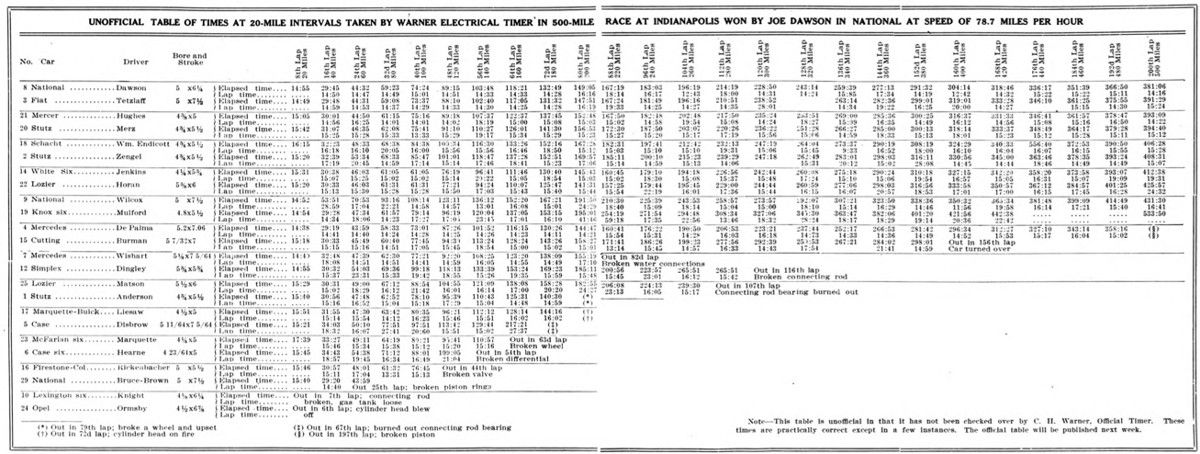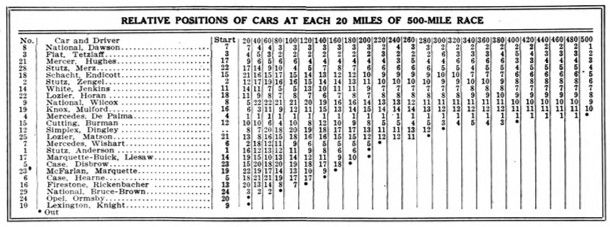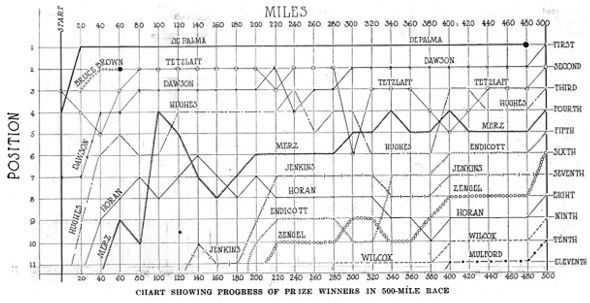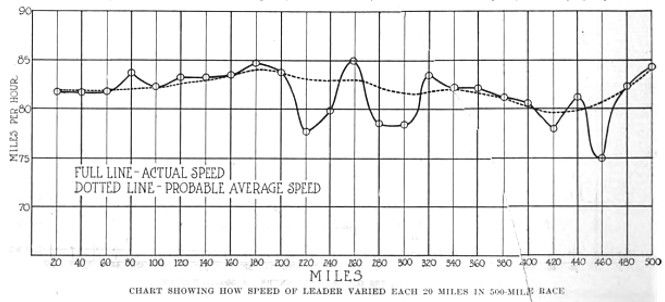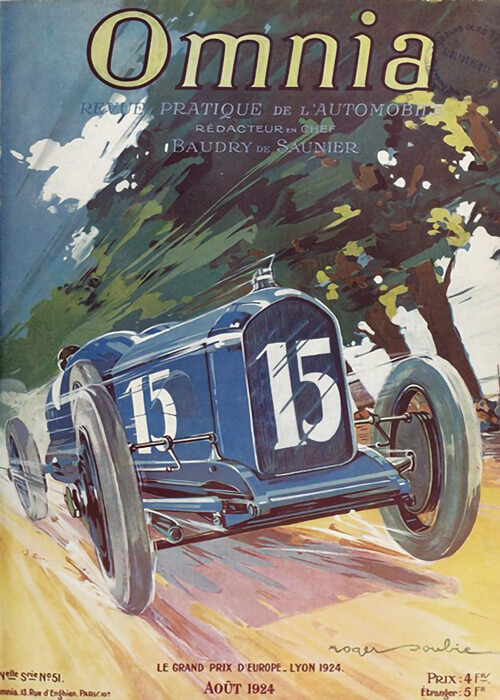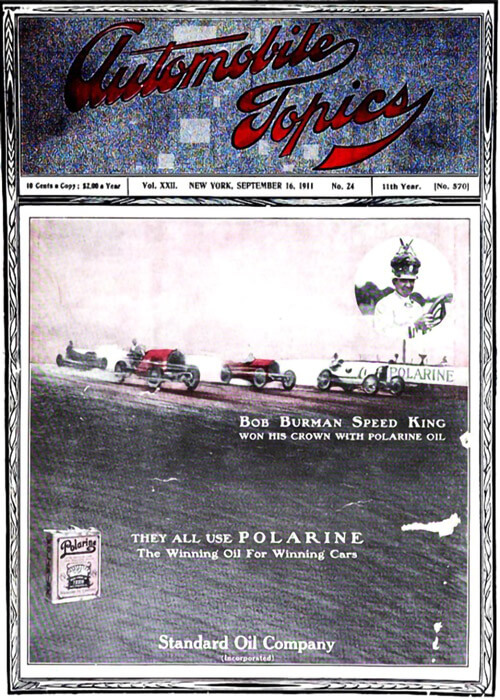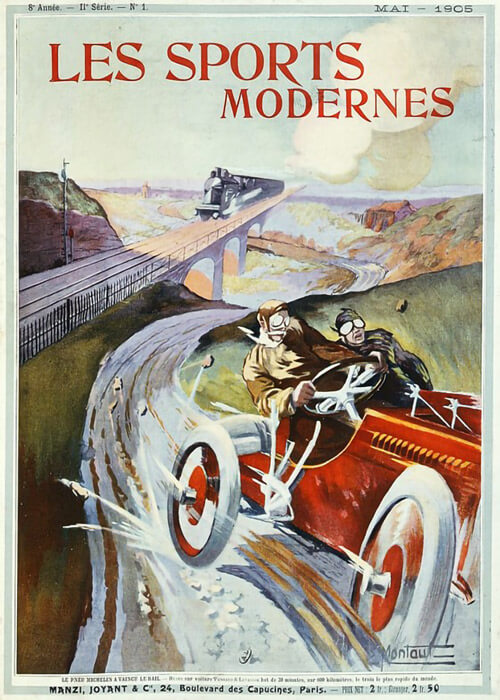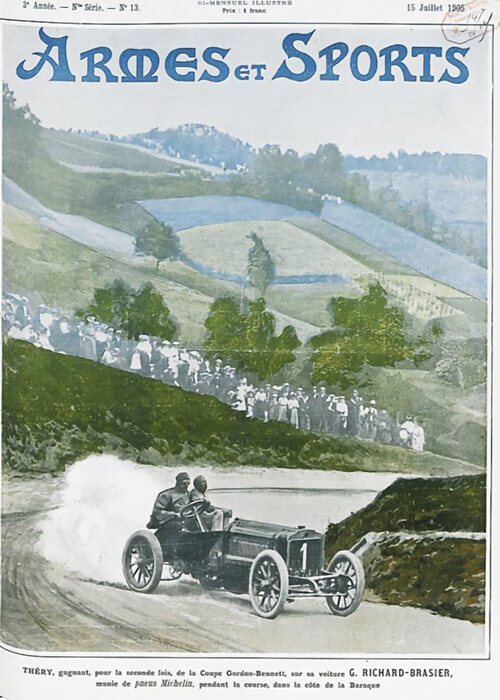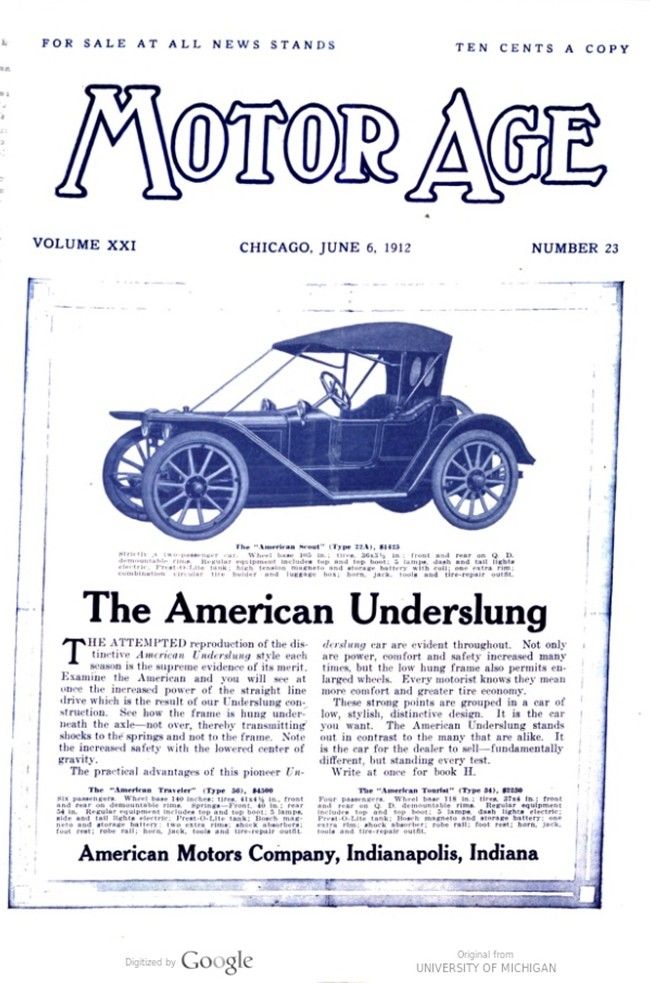
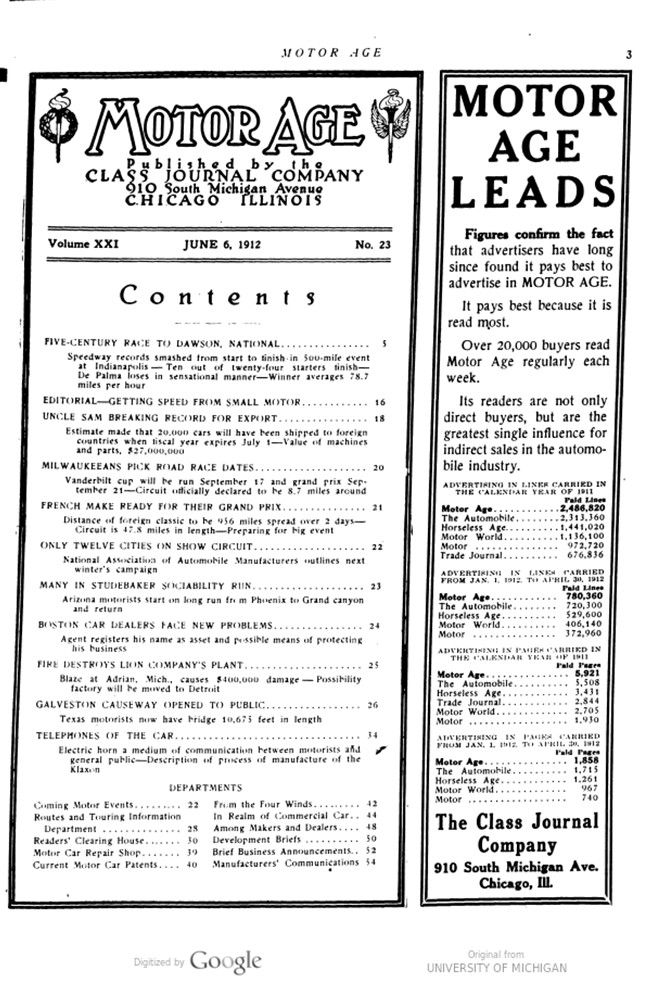
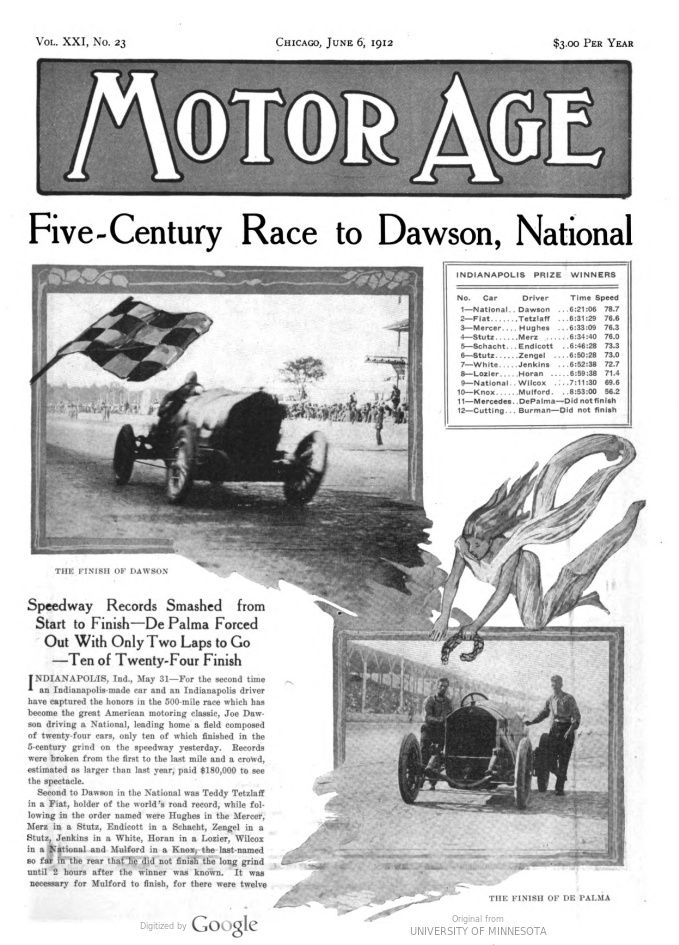
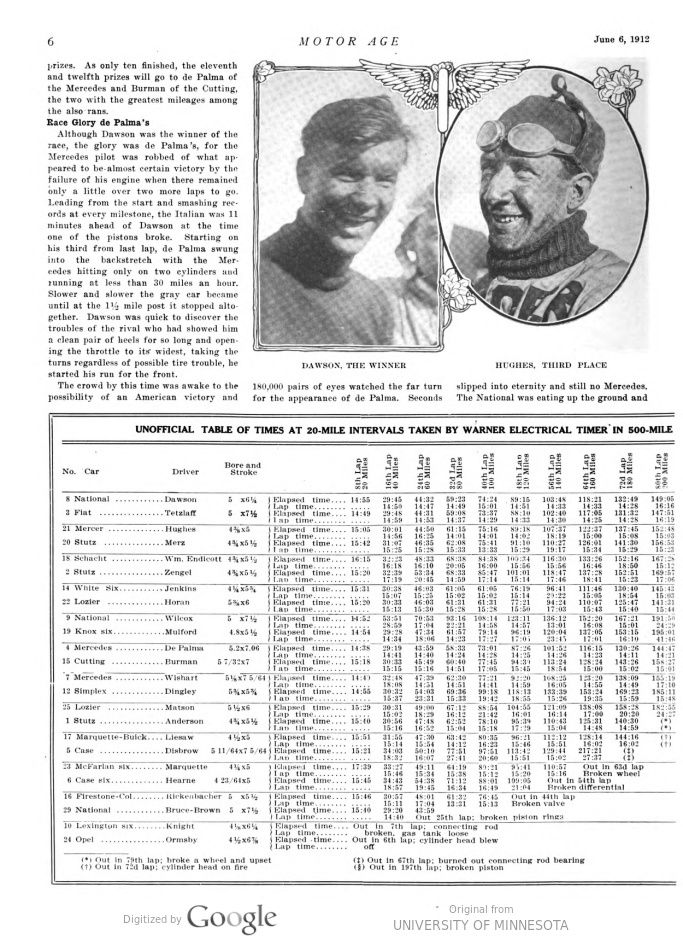
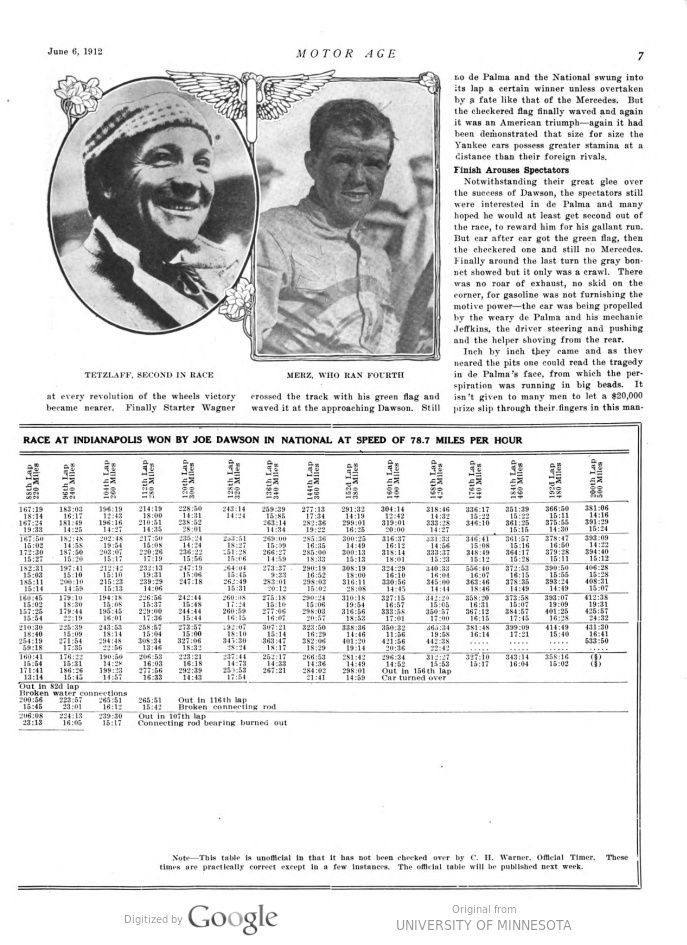
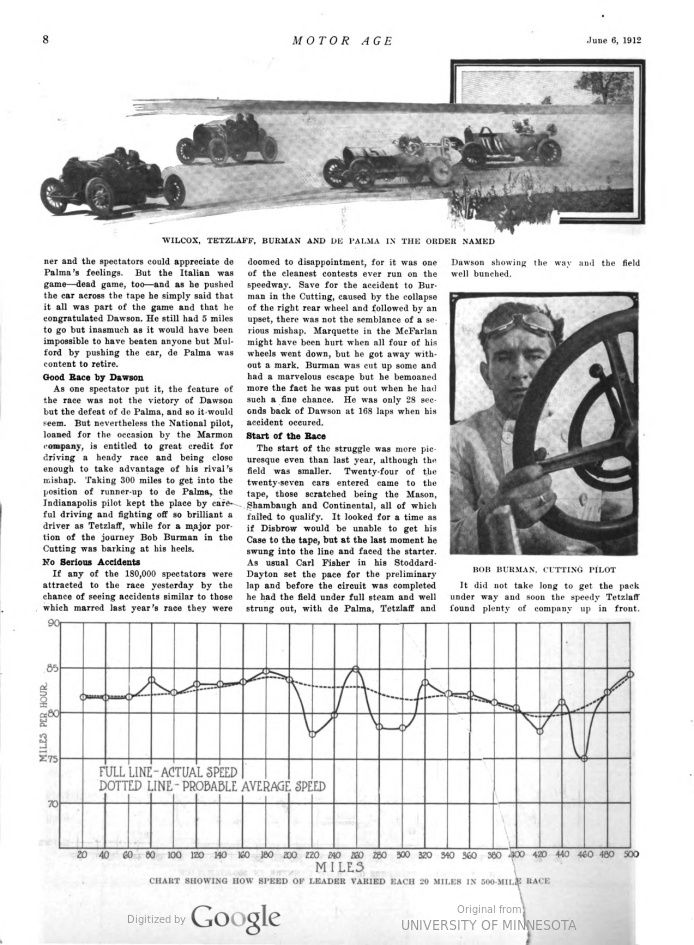
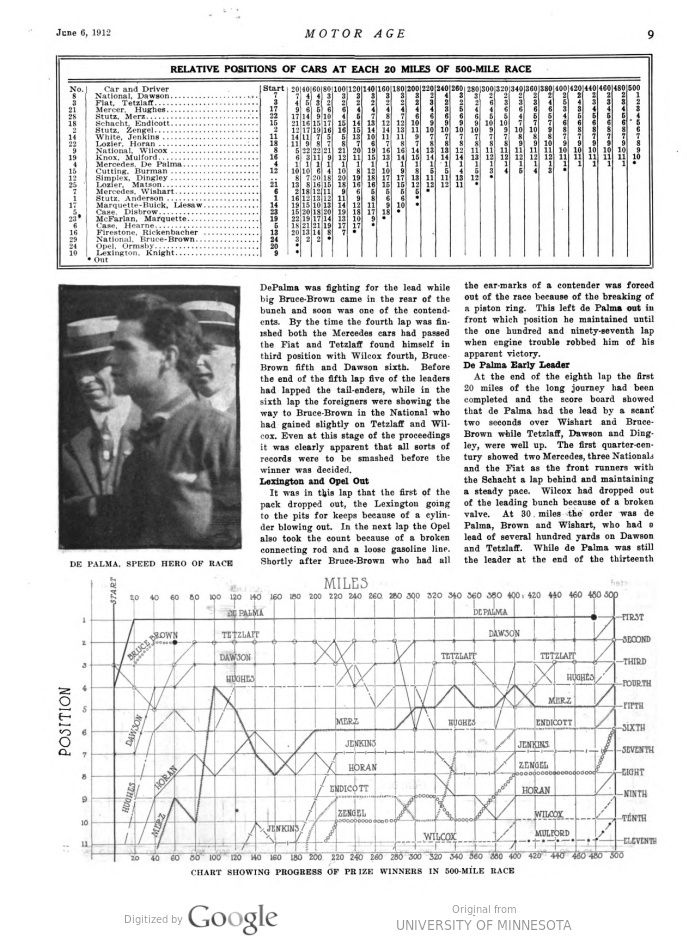
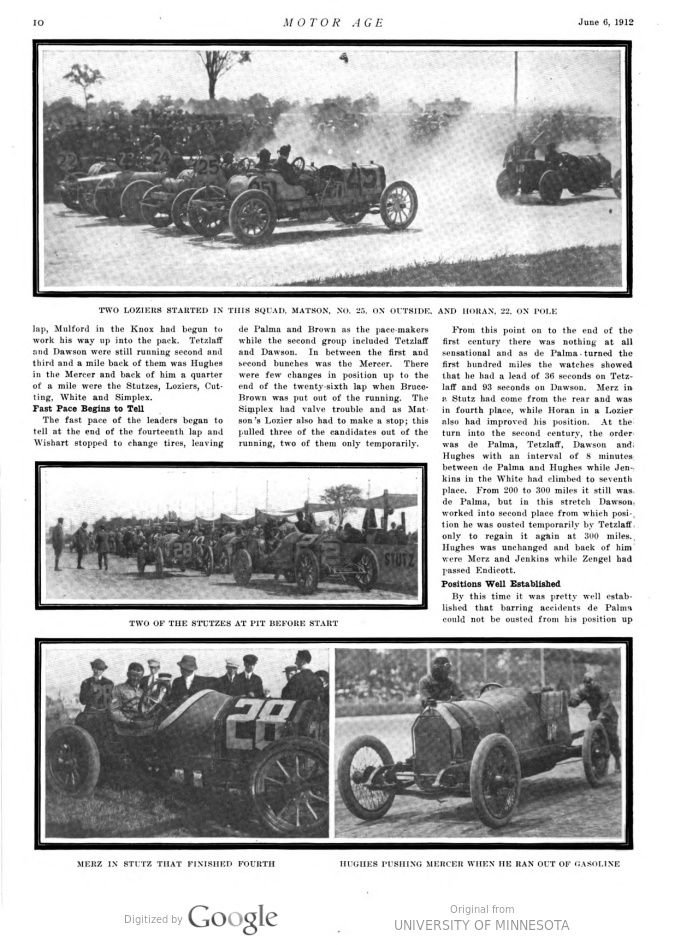
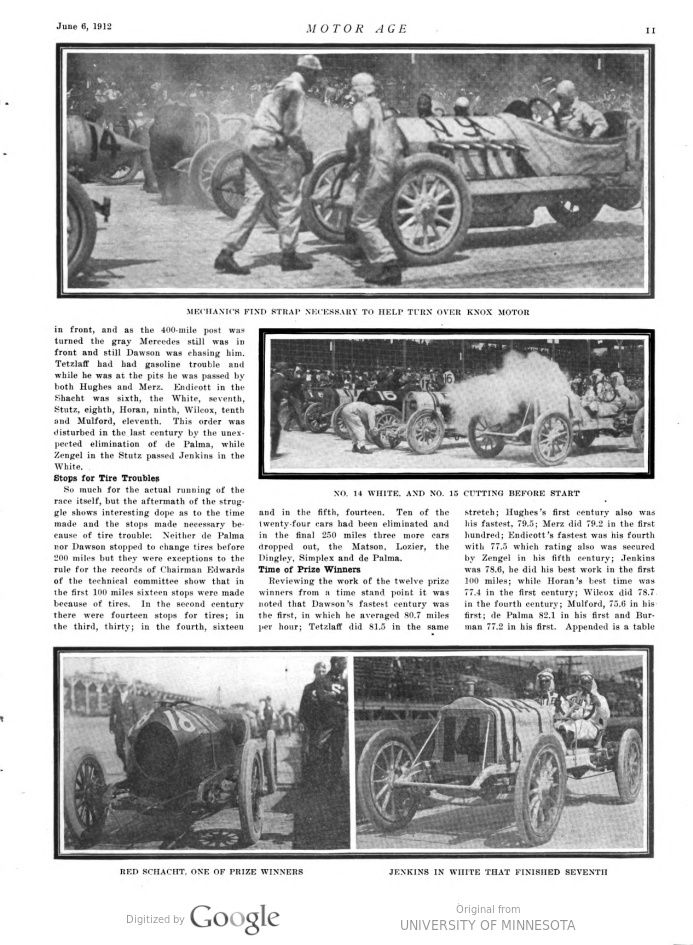
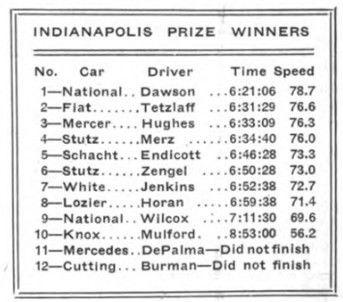
Text and jpegs by courtesy of hathitrust.org www.hathitrust.org, compiled by motorracinghistory.com
MOTOR AGE Vol. XXI, No. 23 Chicago, June 6, 1912
Five-Century Race to Dawson, National
Speedway Records Smashed from Start to Finish – De Palma Forced Out With Only Two Laps to Go – Ten of Twenty-Four Finish
INDIANAPOLIS, Ind., May 31-For the second time an Indianapolis-made car and an Indianapolis driver have captured the honors in the 500-mile race which has become the great American motoring classic, Joe Dawson driving a National, leading home a field composed of twenty-four cars, only ten of which finished in the 5-century grind on the speedway yesterday. Records were broken from the first to the last mile and a crowd, estimated as larger than last year, paid $180,000 to see the spectacle.
Second to Dawson in the National was Teddy Tetzlaff in a Fiat, holder of the world’s road record, while following in the order named were Hughes in the Mercer, Merz in a Stutz, Endicott in a Schacht, Zengel in a Stutz, Jenkins in a White, Horan in a Lozier, Wilcox in a National and Mulford in a Knox, the last-named so far in the rear that he did not finish the long grind until 2 hours after the winner was known. It was necessary for Mulford to finish, for there were twelve prizes. As only ten finished, the eleventh and twelfth prizes will go to de Palma of the Mercedes and Burman of the Cutting, the two with the greatest mileages among the also rans.
Race Glory de Palma’s
Although Dawson was the winner of the race, the glory was de Palma’s, for the Mercedes pilot was robbed of what appeared to be almost certain victory by the failure of his engine when there remained only a little over two more laps to go. Leading from the start and smashing records at every milestone, the Italian was 11 minutes ahead of Dawson at the time one of the pistons broke. Starting on his third from last lap, de Palma swung into the backstretch with the Mercedes hitting only on two cylinders and running at less than 30 miles an hour. Slower and slower the gray car became until at the 1½ mile post it stopped altogether. Dawson was quick to discover the troubles of the rival who had showed him a clean pair of heels for so long and opening the throttle to its widest, taking the turns regardless of possible tire trouble, he started his run for the front.
The crowd by this time was awake to the possibility of an American victory and 180,000 pairs of eyes watched the far turn for the appearance of de Palma. Seconds lipped into eternity and still no Mercedes. The National was eating up the ground and at every revolution of the wheels, victory became nearer. Finally, Starter Wagner crossed the track with his green flag and waved it at the approaching Dawson. Still no De Palma and the National swung into its lap a certain winner unless overtaken by a fate like that of the Mercedes. But the checkered flag finally waved and again it was an American triumph – again it had been demonstrated that size for size the Yankee cars possess greater stamina at a distance than their foreign rivals.
Finish Arouses Spectators
Notwithstanding their great glee over the success of Dawson, the spectators still were interested in de Palma and many hoped he would at least get second out of the race, to reward him for his gallant run. But car after car got the green flag, then the checkered one and still no Mercedes. Finally around the last turn the gray bon- net showed but it only was a crawl. There was no roar of exhaust, no skid on the corner, for gasoline was not furnishing the motive power-the car was being propelled by the weary de Palma and his mechanic Jeffkins, the driver steering and pushing and the helper shoving from the rear.
Inch by inch, they came and as they neared the pits one could read the tragedy in de Palma’s face, from which the perspiration was running in big beads. It isn’t given to many men to let a $20,000 prize slip through their fingers in this manner and the spectators could appreciate de Palma’s feelings. But the Italian was game – dead game, too – and as he pushed the car across the tape he simply said that it all was part of the game and that he congratulated Dawson. He still had 5 miles to go but inasmuch as it would have been impossible to have beaten anyone but Mul- ford by pushing the car, de Palma was content to retire.
Good Race by Dawson
As one spectator put it, the feature of the race was not the victory of Dawson but the defeat of de Palma, and so it would seem. But nevertheless the National pilot, loaned for the occasion by the Marmon company, is entitled to great credit for driving a heady race and being close enough to take advantage of his rival’s mishap. Taking .300 miles to get into the position of runner-up to de Palma, the Indianapolis pilot kept the place by careful driving and fighting off so brilliant a driver as Tetzlaff, while for a major portion of the journey Bob Burman in the Cutting was barking at his heels.
No Serious Accidents
If any of the 180,000 spectators were attracted to the race yesterday by the chance of seeing accidents similar to those which marred last year’s race they were doomed to disappointment, for it was one of the cleanest contests ever run on the speedway. Save for the accident to Bur man in the Cutting, caused by the collapse of the right rear wheel and followed by an upset, there was not the semblance of a serious mishap. Marquette in the McFarlan might have been hurt when all four of his wheels went down, but he got away with- out a mark. Burman was cut up some and had a marvelous escape but he bemoaned more the fact he was put out when he had such a fine chance. He was only 28 seconds back of Dawson at 168 laps when his accident occurred.
Start of the Race
The start of the struggle was more picturesque even than last year, although the field was smaller. Twenty-four of the twenty-seven cars entered came to the tape, those scratched being the Mason, Shambaugh and Continental, all of which failed to qualify. It looked for a time as if Disbrow would be unable to get his Case to the tape, but at the last moment he swung into the line and faced the starter. As usual Carl Fisher in his Stoddard-Dayton set the pace for the preliminary lap and before the circuit was completed, he had the field under full steam and well strung out, with de Palma, Tetzlaff and Dawson showing the way and the field well bunched.
It did not take long to get the pack underway and soon the speedy Tetzlaff found plenty of company up in front. DePalma was fighting for the lead while big Bruce-Brown came in the rear of the bunch and soon was one of the contenders. By the time the fourth lap was finished both the Mercedes cars had passed the Fiat and Tetzlaff found himself in third position with Wilcox fourth, Bruce Brown fifth and Dawson sixth. Before the end of the fifth lap five of the leaders had lapped the tail-enders, while in the sixth lap the foreigners were showing the way to Bruce-Brown in the National who had gained slightly on Tetzlaff and Wilcox. Even at this stage of the proceedings it was clearly apparent that all sorts of records were to be smashed before the winner was decided.
Lexington and Opel Out
It was in this lap that the first of the pack dropped out, the Lexington going to the pits for keeps because of a cylinder blowing out. In the next lap the Opel also took the count because of a broken connecting rod and a loose gasoline line. Shortly after Bruce-Brown who had all the earmarks of a contender, was forced out of the race because of the breaking of a piston ring. This left de Palma out in front which position he maintained until the one hundred and ninety-seventh lap when engine trouble robbed him of his apparent victory.
De Palma Early Leader
At the end of the eighth lap the first 20 miles of the long journey had been completed and the score board showed that de Palma had the lead by a scant two seconds over Wishart and Bruce-Brown while Tetzlaff, Dawson and Dingley, were well up. The first quarter-century showed two Mercedes, three Nationals and the Fiat as the front runners with the Schacht a lap behind and maintaining a steady pace. Wilcox had dropped out of the leading bunch because of a broken valve. At 30 miles the order was de Palma, Brown and Wishart, who had a lead of several hundred yards on Dawson and Tetzlaff. While de Palma was still the leader at the end of the thirteenth lap, Mulford in the Knox had begun to work his way up into the pack. Tetzlaff and Dawson were still running second and third and a mile back of them was Hughes in the Mercer and back of him a quarter of a mile were the Stutzes, Loziers, Cutting, White and Simplex.
Fast Pace Begins to Tell
The fast pace of the leaders began to tell at the end of the fourteenth lap and Wishart stopped to change tires, leaving de Palma and Brown as the pace-makers while the second group included Tetzlaff and Dawson. In between the first and second bunches was the Mercer. There were few changes in position up to the end of the twenty-sixth lap when Bruce-Brown was put out of the running. The Simplex had valve trouble and as Matson’s Lozier also had to make a stop; this pulled three of the candidates out of the running, two of them only temporarily.
From this point on to the end of the first century there was nothing at all sensational and as de Palma turned the first hundred miles the watches showed that he had a lead of 36 seconds on Tetzlaff and 93 seconds on Dawson. Merz in a Stutz had come from the rear and was in fourth place, while Horan in a Lozier also had improved his position. At the turn into the second century, the order was de Palma, Tetzlaff, Dawson and Hughes with an interval of 8 minutes between de Palma and Hughes while Jenkins in the White had climbed to seventh place. From 200 to 300 miles it still was de Palma, but in this stretch, Dawson worked into second place from which position he was ousted temporarily by Tetzlaff only to regain it again at 300 miles. Hughes was unchanged and back of him were Merz and Jenkins while Zengel had passed Endicott.
Positions Well Established
By this time it was pretty well established that barring accidents de Palma could not be ousted from his position up in front, and as the 400-mile post was turned the gray Mercedes still was in front and still Dawson was chasing him. Tetzlaff had had gasoline trouble and while he was at the pits he was passed by both Hughes and Merz. Endicott in the Shacht was sixth, the White, seventh, Stutz, eighth, Horan, ninth, Wilcox, tenth and Mulford, eleventh. This order was disturbed in the last century by the unexpected elimination of de Palma, while Zengel in the Stutz passed Jenkins in the White.
Stops for Tire Troubles
So much for the actual running of the race itself, but the aftermath of the struggle shows interesting dope as to the time made and the stops made necessary because of tire trouble. Neither de Palma nor Dawson stopped to change tires before 200 miles but they were exceptions to the rule for the records of Chairman Edwards of the technical committee show that in the first 100 miles sixteen stops were made because of tires. In the second century there were fourteen stops for tires; in the third, thirty; in the fourth, sixteen and in the fifth, fourteen. Ten of the twenty-four cars had been eliminated and in the final 250 miles three more cars dropped out, the Matson, Lozier, the Dingley, Simplex and de Palma.
Time of Prize Winners
Reviewing the work of the twelve prize winners from a time stand point it was noted that Dawson’s fastest century was the first, in which he averaged 80.7 miles per hour; Tetzlaff did 81.5 in the same stretch; Hughes’s first century also was his fastest, 79.5; Merz did 79.2 in the first hundred; Endicott’s fastest was his fourth with 77.5 which rating also was secured by Zengel in his fifth century; Jenkins was 78.6, he did his best work in the first 100 miles; while Horan’s best time was 77.4 in the first century; Wilcox did 78.7 in the fourth century; Mulford, 75.6 in his first; de Palma 82.1 in his first and Burman 77.2 in his first. Appended is a table showing the century performances of all twelve prize winners.
